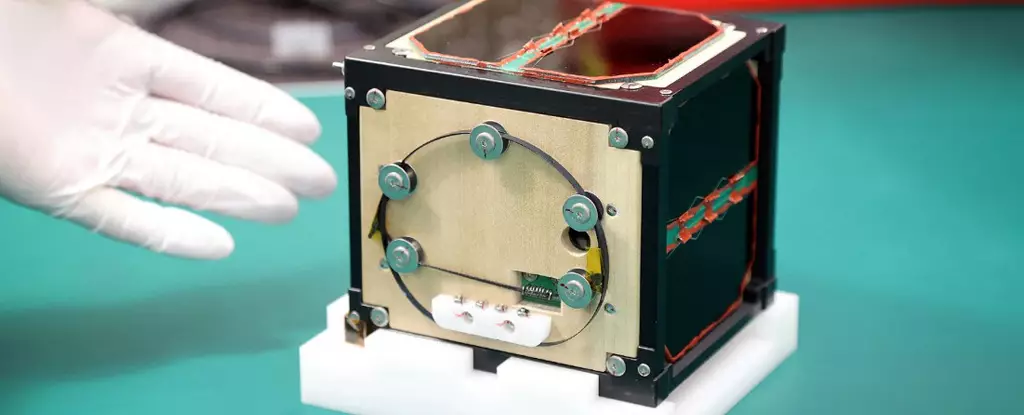In a groundbreaking development, Japanese researchers have successfully constructed the world’s first wooden satellite. This innovative cuboid craft, designed by scientists at Kyoto University in collaboration with Sumitomo Forestry, breaks the traditional norms of satellite construction with its unique material composition.
Measuring just 10 centimeters on each side, this wooden satellite, named LignoSat, represents a shift towards more sustainable practices in space exploration. The creators believe that the wooden material used in the satellite will completely burn up upon re-entry into the Earth’s atmosphere, eliminating the generation of harmful metal particles that can pose environmental and telecommunications risks.
By introducing satellites made from non-metal materials, such as wood, the developers hope to pave the way for a new era in satellite construction. Takao Doi, an astronaut and special professor at Kyoto University, emphasized the importance of non-metallic satellites becoming the norm in the industry, highlighting the potential benefits for both space exploration and environmental preservation.
SpaceX Launch and Testing
The wooden satellite is set to be launched into space aboard a SpaceX rocket from the Kennedy Space Center in September. Upon reaching the International Space Station (ISS), the satellite will be released from the Japanese ISS experiment module for testing its strength and durability. Data collected from the satellite will enable researchers to assess its performance under various conditions, including temperature fluctuations and strain tests.
Advancements in Climate Research
In addition to the wooden satellite project, recent collaborations between the European Space Agency (ESA) and JAXA have led to the launch of a sophisticated satellite aimed at studying the role of clouds in combating climate change. The EarthCARE satellite, which launched from California, will orbit Earth for three years, gathering valuable data to enhance our understanding of environmental dynamics.
The development of the world’s first wooden satellite represents a significant milestone in space technology. By embracing sustainable materials and innovative design approaches, researchers are pushing the boundaries of traditional satellite construction and opening up new possibilities for future space exploration endeavors. This breakthrough not only highlights the potential for environmentally friendly solutions in space engineering but also underscores the importance of continued collaboration and innovation in advancing our understanding of the universe.


Leave a Reply